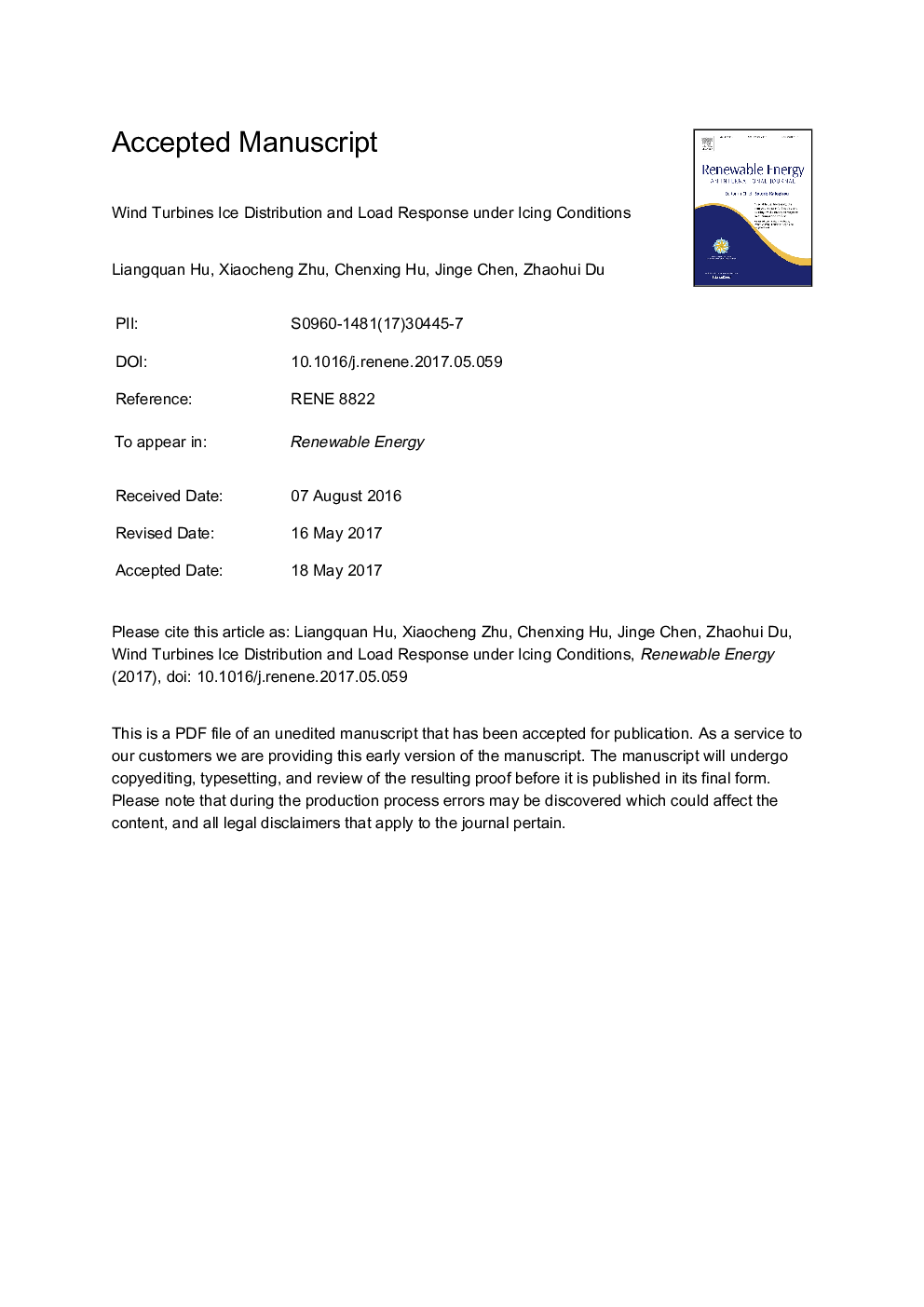| Article ID | Journal | Published Year | Pages | File Type |
|---|---|---|---|---|
| 4926057 | Renewable Energy | 2017 | 28 Pages |
Abstract
Wind turbines operating in cold climate are susceptible to icing events. Under icing conditions, in order to gain a better understanding of the ice distribution affected by different parameters, and the load response of different components, the NREL Phase VI was selected as the test case. Firstly, the ice distribution affected by different parameters with the multi-dispersed water droplets size was investigated. Results show that the ice mass and the ice thickness increase approximately linear from the blade root to the blade tip. Higher free stream wind speed, smaller pitch angle, higher liquid water content, larger water droplets median volumetric diameter and lower temperature have bigger effect on the blade icing. Secondly, the ice shapes on the blade tip region (r/RÂ =Â 80%-100%) were simulated. Then the lift coefficients and the drag coefficients of the clean airfoils and the iced airfoils were calculated. Finally, the load response of the asymmetric icing (one blade is covered with ice, the other is free) and the symmetric icing (two blades are covered with ice) of the blade and the tower were analyzed. Results show that icing can decrease the rotor thrust force, the blade root edgewise moment and the blade root flatwise moment. For the low speed shaft, the asymmetric icing can induce additional imbalance shear force. For the tower base, the symmetric icing can decrease the fore after moment, whereas the asymmetric icing can increase the side to side moment. The asymmetric load can increase the blade and the tower fatigue damage up to 97.6% and 70.8%, respectively.
Keywords
Related Topics
Physical Sciences and Engineering
Energy
Renewable Energy, Sustainability and the Environment
Authors
Liangquan Hu, Xiaocheng Zhu, Chenxing Hu, Jinge Chen, Zhaohui Du,
